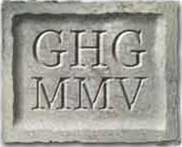
Guarlford History Group
Railway Tunnels Under the Malvern HillsBeginningsAs early as 1846 there had been talk of building a railway line to link Worcester and Hereford, and eventually the South Wales coal fields, but it was not until about 1858 that cooperation between the main players was finally agreed and an act passed by parliament. The line was a cooperative venture between the Worcester and Hereford Railway, the Newport Abergavenny & Hereford Railway and the Old Worse and Worse. These companies amalgamated in 1860 to form the West Midland Railway and were absorbed into Great Western in 1863. Lady Foley lobbied for a route that passed through Malvern and that necessitated boring a tunnel through the Malvern Hills between Malvern Wells and Colwall, which has become locally known as 'The Colwall Tunnel'. The tunnel starts below King Edwards Road near the Worcestershire golf course and finishes near Colwall station The First TunnelThe contract was awarded to the Railway Builder Thomas Brassey and his partner Civil Engineer Stephen Ballard of Colwall; Lidell and Gordon were the chosen engineers. Work in earnest began about 1856. Progress at both ends was generally straightforward, progressing at the rate of 10 metres per week, until the navvies reached some of the hardest rock on earth. Equipped only with picks, shovels, crowbars and blasting powder, progress then dropped to a fraction of a metre per day and two subcontractors went bust. Despite this the two faces met on 21st July 1860 and the tunnel was officially opened on 12th June 1861. It is said that circa 1860, Mammoth bones were found near the tunnel entrance. Ventilation in the tunnel was poor and by the early 1900s the continued blast from engine's chimneys had weakened the brick lining so a decision was taken by the Great Western Railway to build a larger (single track) tunnel to run alongside the old one; the ventilation shafts were shared. During WWII the old tunnel, which had been closed, was used as a Royal Navy armaments store. The Second Tunnel
Amy Neal told us that her father, James Neal of Guarlford, worked on this later tunnel at times knee deep in water. James Carty, who had emigrated from Barbados in 1908, also worked on the tunnel, and was selected by the Malvern gang for the 'Shake Hands Ceremony' when the teams, working from each end, met in the middle (ref 6). His son, known as Sunshine Carty, played for the Guarlford football team (ref 7). The contract was awarded to Wilson, Lovatt Limited of Wolverhampton and work began in January 1924. In the intervening years technology had improved; where the hardest rock was met with, compressed air drills and extensive blasting operations involving the use of a large quantity of gelignite were employed. The new tunnel opened on 2nd August 1926. Whilst there was an option to re-bore the old tunnel and introduce two way working, this was never adopted. The spoil from the tunnel was piled by the side of the Malvern Wells entrance and later removed to form hardcore for motorways. A copy of the GWR article referenced below, held by Colwall Village Society in their archive at the Millennium Room, Colwall Library, appears to be the only locally surviving account of the building of the second tunnel; the article was reproduced in the Malvern Gazette. References1. John Boynton, Rails Through the Hills, Mid England Books, 1995 2. Helen J Simpson, The Days the Trains Came, Gracewing Publishing 1997 3. Great Western Railway Magazine 1926 4. Going Under the Hills, BBC Hereford and Worcester 5. Old Colwall Tunnel and Second World War Armaments Store 6. Bramford, Margaret, This was our Malvern, Aspect Design, 2000 7. The Guarlford Scene |